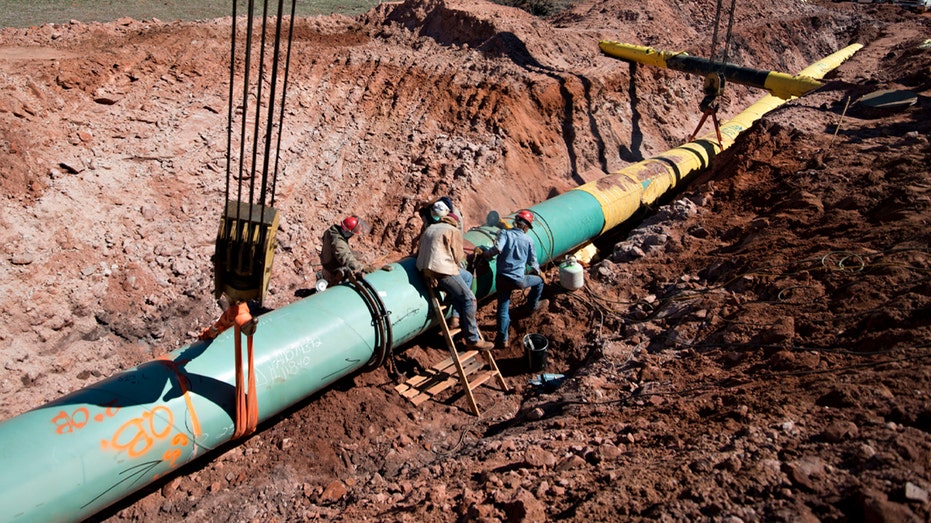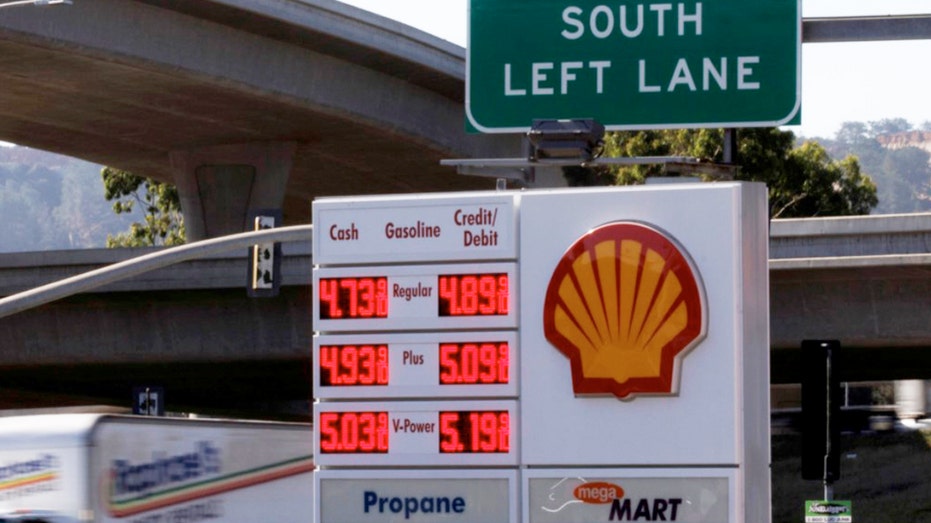Oil nears $87 after Keystone Pipeline canceled one year ago
Oil hit its highest level since October 2014
US ‘underinvested’ in energy impacting oil prices: Analyst
Price Futures Group Senior Analyst Phil Flynn and Great Hill Capital Chairman Thomas Hayes discuss rising gas prices during inflation.
Joe Biden was inaugurated on Jan. 20, 2021, and within hours the new president could not wait to sign a slew of executive orders. Yet the one that has set the tone for his presidency and perhaps laid the groundwork for his plunging popularity and surging inflation was canceling the permit for the Keystone XL Pipeline.
DECEMBER INFLATION BREAKDOWN: WHERE ARE PRICE INCREASES HITTING AMERICANS THE HARDEST?
| Ticker | Security | Last | Change | Change % |
|---|---|---|---|---|
| USO | UNITED STATES OIL FUND - USD ACC | 71.86 | +0.21 | +0.29% |
The Biden administration thought the cancellation was a way to get back at the previous administration that approved it after the Obama administration killed it and was a signal about its commitment to the environment. Yet it was read by the industry and those that invest in the sector as a knock on America’s oil and gas industry. It also created a domino effect across the fossil fuel space that helped a massive surge in the price of oil and gasoline we are seeing today.
Oil closed just a few cents shy of $87 per barrel Wednesday yet dipped in Thursday's session.
GAS PRICES ARE THE MOST EXPENSIVE IN THESE STATES

(Daniel Acker/Bloomberg via Getty Images / Getty Images)
The energy industry saw this as a political attack on fossil fuels, and it feared that this arbitrary and political decision was only the beginning because studies found the pipeline would not add to greenhouse gas emissions. In fact, it can be argued that the cancellation may actually add to emissions. The oil that would have been moved through the pipeline from Canada will now be transported instead by rail and truck and other means that are not as safe as pipeline transportation.
DOLLAR SIGNALS SHAKY U.S. ECONOMY
| Ticker | Security | Last | Change | Change % |
|---|---|---|---|---|
| XOM | EXXON MOBIL CORP. | 130.46 | +0.57 | +0.44% |
| CVX | CHEVRON CORP. | 165.30 | -0.96 | -0.58% |
| HAL | HALLIBURTON CO. | 32.06 | -0.51 | -1.57% |
Biden wants to take away a tax credit that would allow oil companies to reduce their tax liability by 15% of the qualified costs associated with enhanced oil recovery projects. That is killing the technology that allowed the U.S. fracking revolution and allowed the U.S. to lessen its dependence on foreign oil. The Biden administration also wants to take away the industry's ability to deduct 10% of gross income instead of the cost of resources depleted in a given year which would further restrict U.S. oil output and innovation. The Biden administration has also pressured banks and endowment funds to stop investing in fossil fuels.
Harold Hamm on climate summit: US apologizing to the rest of the world is 'inappropriate'
Continental Resources executive chairman and founder discusses the Biden administration's impact on the oil industry, natural gas demand, Russia and China's absence at the climate summit and Election Day.
The policies have helped restrict U.S. oil production, and the fallout from the Keystone Pipeline remains lost on the administration. The current cost of oil takes partly into account the availability of supply that is expected to come on in the future. The markets had already priced in more supply in regard to the Keystone XL, but now that supply will be harder to get and will be more expensive. The current price of oil also takes into account current investments in oil and gas exploration and drilling. Under Biden, new oil discoveries have fallen to a 75-year low. Research firm Rystad Energy said that the oil and gas industry had only discovered 4.7 billion barrels of oil equivalent by the end of 2021, the lowest amount in 75 years.
Of course, you don't find more oil when you're not looking and lack the investment dollars to do so. Despite hopes that we are going to reduce our demand for oil, the reality that we are not finding oil only makes today's price more expensive. What is lost on this administration and even some analysts is that the current price of oil takes into account future replacement costs. Even though oil was not ready to flow through the pipeline for years, it raised current costs based on expectations of future replacement costs. That is why we have a futures market in oil to help ease those costs.

Gas prices rise with inflation as this sign at a gas station shows in San Diego Nov. 9, 2021. (REUTERS/Mike Blake/File Photo / Reuters Photos)
The crude oil once used has to be replaced. Just like when you drive for a while, you will eventually have to refuel your gas tank. If supply is expected to be more abundant in the future, then current prices should remain somewhat subdued. If there is an expectation that replacement cost in the future is higher, then current prices must be higher to make affordable supplies for people in the future. Not only did the cancellation of the Keystone Pipeline set the stage for higher energy prices. It also helped raise fears of inflation that are plaguing the U.S. and global economy.
READ MORE ON FOX BUSINESS BY CLICKING HERE
Phil Flynn is senior energy analyst at The PRICE Futures Group and a Fox Business Network contributor. He is one of the world's leading market analysts, providing individual investors, professional traders and institutions with up-to-the-minute investment and risk management insight into global petroleum, gasoline and energy markets. His precise and timely forecasts have come to be in great demand by industry and media worldwide, and his impressive career goes back almost three decades, gaining attention with his market calls and energetic personality as writer of The Energy Report. You can contact Phil by phone at (888) 264-5665 or by email at pflynn@pricegroup.com.





















